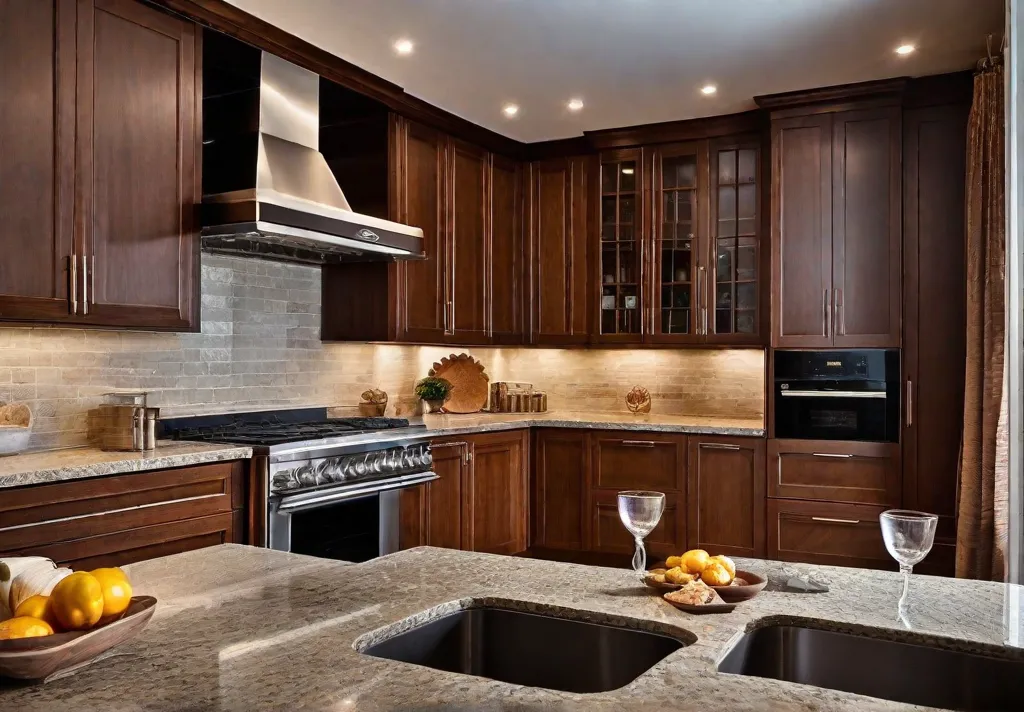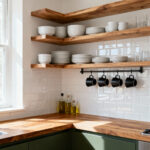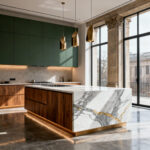Have you ever walked into an old home and felt instantly transported to a simpler, cozier time? That’s the magic of traditional kitchen design. With their warm colors, intricate details, and timeless charm, these kitchens evoke a sense of nostalgia and comfort that never goes out of style.
However, creating a traditional kitchen that will stand the test of time requires careful planning. From selecting suitable materials to incorporating classic elements, there’s an art to achieving that perfect blend of beauty and functionality.
In this guide, we’ll explore eight essential elements crucial for designing a traditional kitchen with lasting appeal. Whether renovating an old space or starting from scratch, these tips will help you create a kitchen that feels inviting and timeless.
Natural Materials: The Foundation of Warmth
The heart of any traditional kitchen lies in its natural materials. Wood, stone, and marble bring a warmth and authenticity that can’t be replicated.
Start with cabinetry made from sturdy woods like oak, maple, or cherry. Their rich tones and beautiful grains add character and depth to the space. For countertops, consider natural stone options like granite or marble. Not only are they durable and heat-resistant, but their unique patterns and veining create a luxurious focal point.
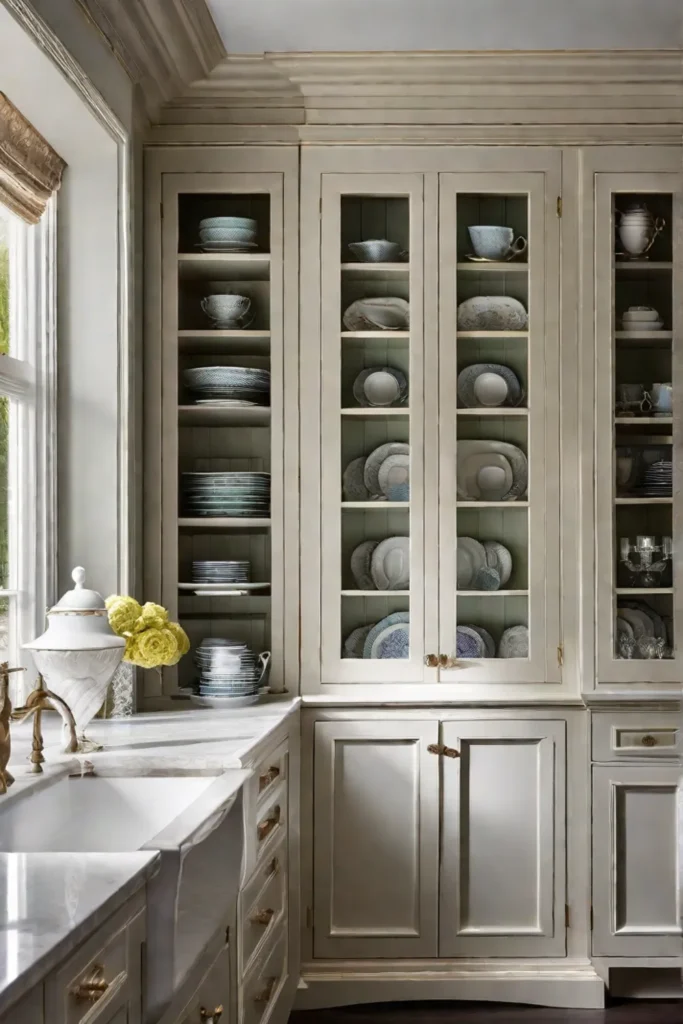
Incorporating marble into your backsplash or flooring is another way to add a touch of elegance. Its classic beauty and timeless appeal make it a staple in traditional kitchen design.
Classic Color Schemes: Soft and Inviting
Traditional kitchens often embrace soft, muted color palettes that create a warm and inviting atmosphere. Think creamy whites, warm beiges, and soothing grays. These neutral tones provide a serene backdrop that allows other elements, like cabinetry and hardware, to shine.
For example, a classic combination of white cabinets and gray countertops can be timeless and versatile. You can add depth and interest with accent colors like deep blues, rich reds, or earthy greens. These pops of color can be introduced through backsplashes, textiles, or decorative accessories.
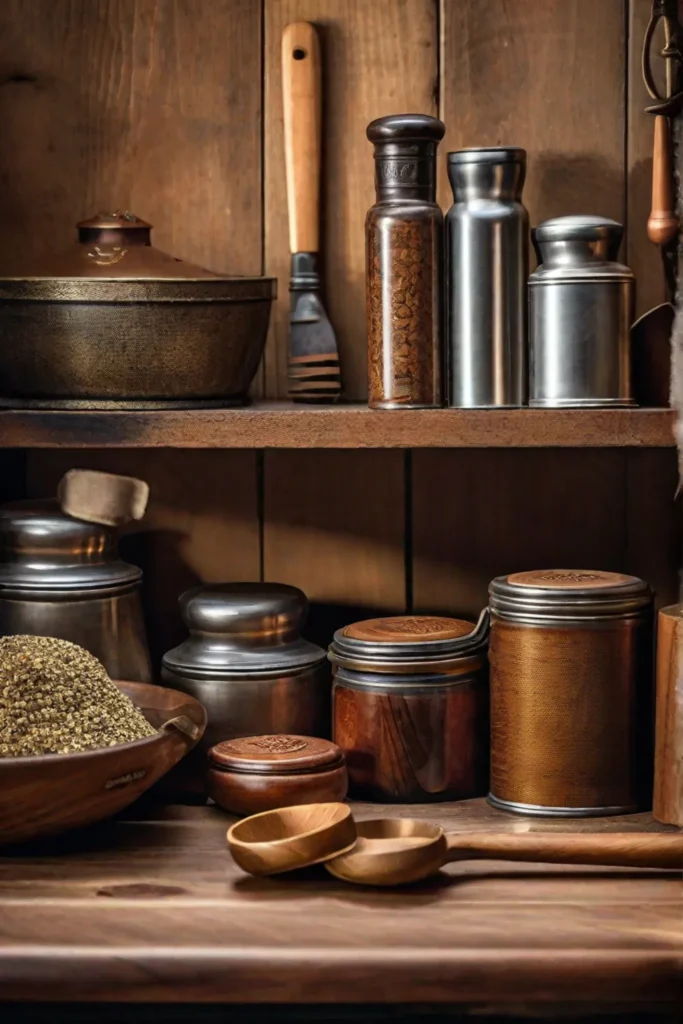
Detailed Cabinetry: The Centerpiece
In a traditional kitchen, the cabinetry takes center stage. Intricate details like raised-panel doors, crown moldings, and antique finishes lend an air of sophistication and timelessness.
When selecting cabinetry, consider styles with intricate detailing and classic hardware. Shaker-style cabinets are a popular choice with their clean lines and simple elegance. For hardware, opt for antique brass, wrought iron, or porcelain knobs and handles that complement the cabinetry’s design.
Remember the importance of crown molding. This architectural detail creates a seamless transition between the cabinets and ceiling, adding a touch of grandeur to the space.
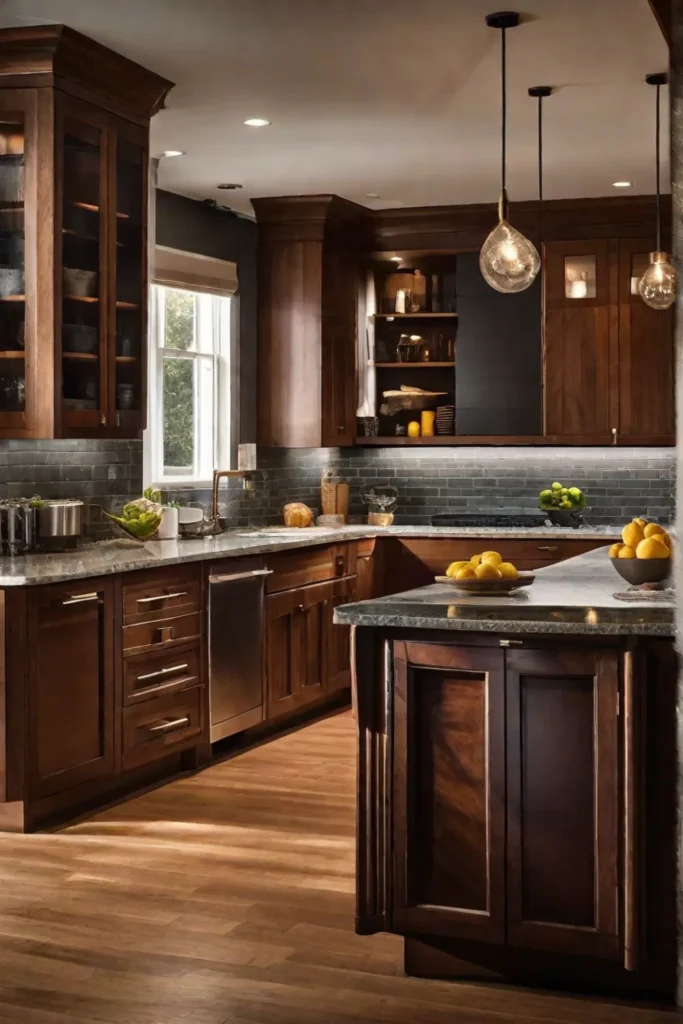
Elegant Lighting: Setting the Mood
Lighting creates a warm and inviting atmosphere in a traditional kitchen. Chandeliers, pendant lights, and under-cabinet lighting work together to create a layered effect that is both functional and beautiful.
A statement chandelier over the kitchen island or dining area can be a stunning focal point. Complement it with pendant lights above the countertops for task lighting and under-cabinet lighting to illuminate work surfaces.
When selecting fixtures, look for designs that complement the kitchen’s overall style. Lantern-shaped pendants or wrought iron chandeliers can add a touch of rustic charm, while crystal or brass fixtures lend a more formal elegance.
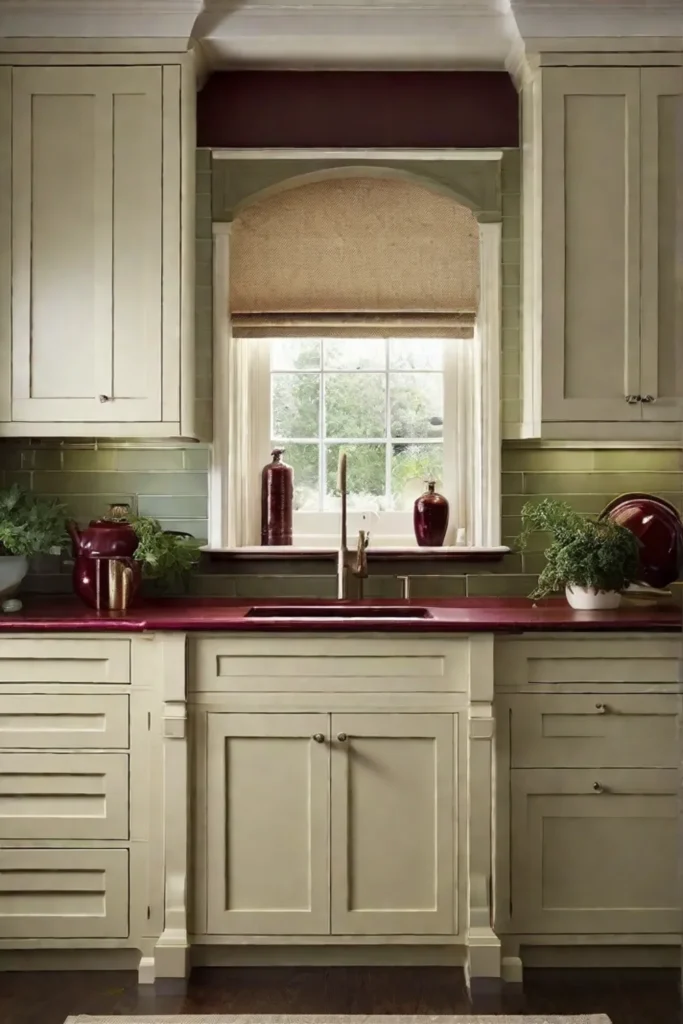
Timeless Backsplashes: A Classic Touch
Backsplashes are practical and an opportunity to add character and charm to your traditional kitchen. Classic materials like subway, penny, or encaustic tiles with intricate patterns can create a timeless look.
Consider natural stone backsplashes of marble or granite for a more luxurious feel. Their unique veining and patterns add depth and interest to the space.
When choosing a backsplash, consider your kitchen’s overall color scheme and style. A classic white subway tile backsplash can complement traditional and modern kitchens, while a colorful encaustic tile backsplash adds a touch of Mediterranean flair.
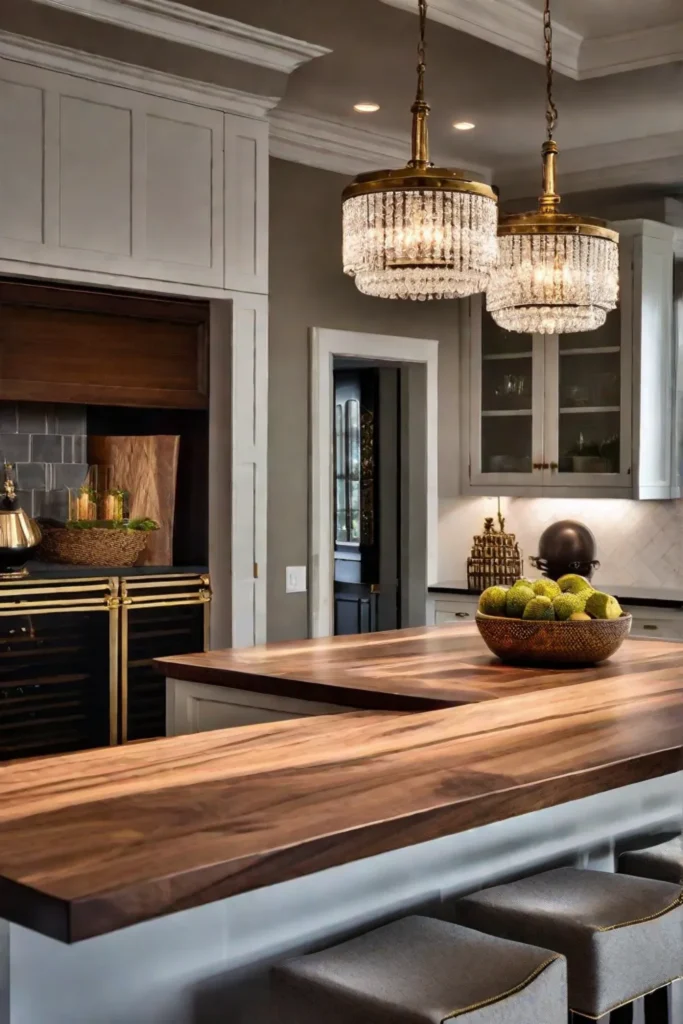
Ornate Flooring: A Solid Foundation
The flooring in a traditional kitchen sets the tone for the entire space. Hardwood floors, like oak or maple, bring warmth and character underfoot. Consider natural stone options like marble, granite, or travertine for a more luxurious look.
If you prefer tile, choose designs with intricate patterns or motifs that complement the kitchen’s aesthetic. Ceramic tiles offer a wide range of options and can mimic the look of natural stone at a more affordable price.
When selecting flooring, balance beauty with practicality. Opt for durable materials that can withstand heavy foot traffic and moisture. Additionally, consider adding area rugs to define spaces and protect the flooring from scratches.

Luxurious Countertops: The Focal Point
The countertops are the focal point of a traditional kitchen and demand attention. Materials like granite, quartz, and marble offer exceptional durability and timeless elegance.
When choosing countertops, consider the edge profile. Beveled, ogee or bullnose edges add a touch of sophistication that complements the cabinetry and other elements. The countertop’s color and pattern should also harmonize with the overall design scheme.
Remember to incorporate a backsplash that enhances the countertop’s beauty. A tiled backsplash in classic colors like white subway or mosaic tiles can create a cohesive and visually appealing look.
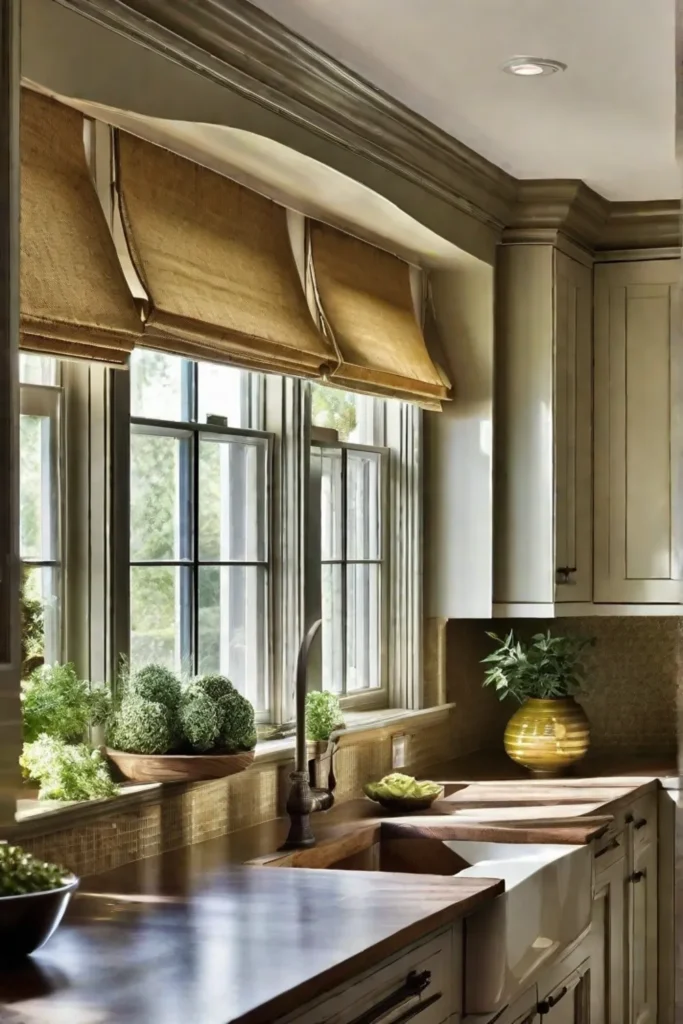
Decorative Accessories: The Finishing Touches
Finally, decorative accessories are the finishing touches that tie a traditional kitchen together. Antique or vintage items, like a grandfather clock or ornate mirror, add character and a sense of history.
Display decorative plates with traditional motifs or floral patterns on open shelves or walls. Copper pots, cast iron pans, and wooden cutting boards serve a functional purpose and double as decorative accents.
Textiles like curtains, tablecloths, and runners can instantly transform the look and feel of your kitchen. Choose fabrics with classic patterns like gingham, plaid, or floral prints to enhance the cozy and inviting ambiance.
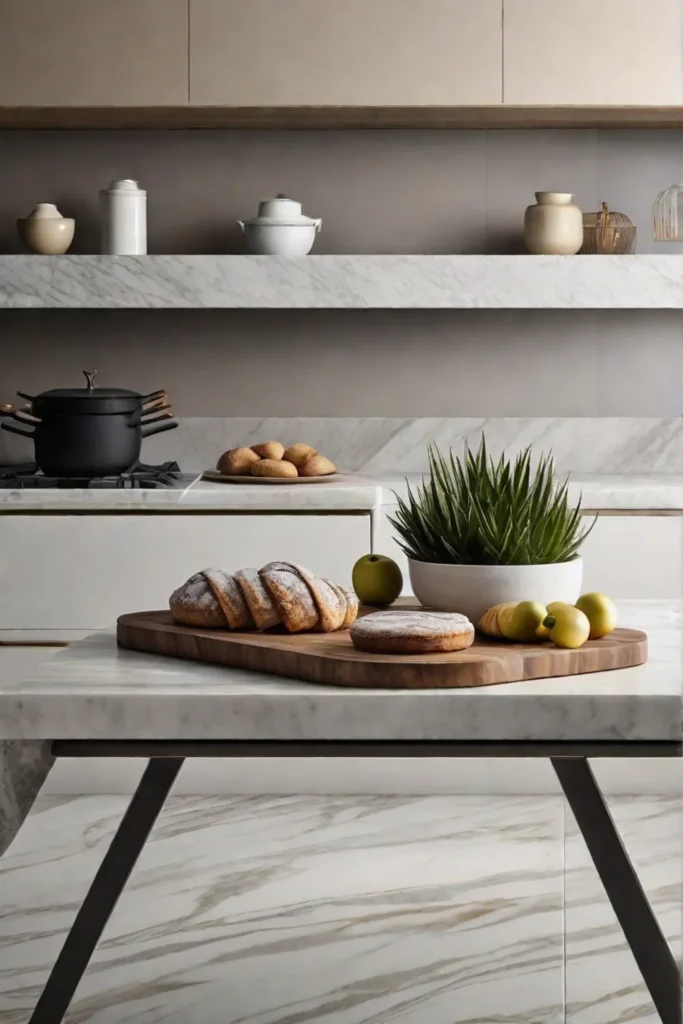
Conclusion
Creating a traditional kitchen with lasting appeal is an art form. You can craft a space that exudes warmth, functionality, and enduring style by incorporating these eight essential elements – natural materials, classic color schemes, detailed cabinetry, elegant lighting, timeless backsplashes, ornate flooring, luxurious countertops, and decorative accessories.
Remember, the key is to strike a balance between beauty and practicality. A traditional kitchen should be aesthetically pleasing and functional, where you can cook, entertain, and gather with loved ones.
So, whether you’re renovating an old space or starting from scratch, take the time to consider these elements carefully. With some planning and attention to detail, you can create a traditional kitchen that will stand the test of time and become the heart of your home for years to come.
Are you ready to embark on your traditional kitchen design journey? Share your thoughts and plans in the comments below. We’d love to hear from you!
